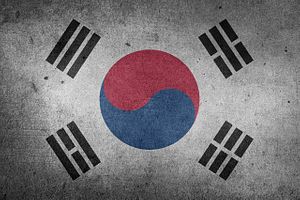It all started when South Korea’s Cultural Heritage Administration revealed a new uniform for those who work at Geunjeongjeon, one of the main buildings inside Gyeongbok Palace in Seoul.
Officials working at the palace wear either traditional South Korean outfits or replicas of old uniforms that were worn in a specific era. The administration, however, believes the outfits “inconvenient” for them to carry out their duties.
Therefore, the new uniform, which was revealed on October 18, was designed in a simpler way so that it can guarantee the ease of use and maximize productivity for officials, the administration explained.
The administration also stressed that “preserving” South Korea’s traditional elements were taken into consideration when designing the new uniform.
The uniform met an unexpected backlash as many pointed out that it resembles a Mao suit, which is widely worn in China and North Korea, especially by government officials.
Critics say, in particular, that the uniform looks too much like the ones worn in North Korea, accusing the administration of taking fashion inspiration from the North.
Seoul-based lawmaker Cho Kyung-tae is one of them. In the latest National Assembly inspection, Cho accused the administration of “intentionally copying” North Korea’s Mao suit.
Cho said it is appalling that the administration spent citizens taxes to “design” the new uniform.
“After all, it looks exactly like a Mao suit worn in North Korea. The color is even the same,” Cho lamented.
In response, Chung Jae-sook, chairman of the administration, said the organization conducted research and study on the design of the new uniform thoroughly, and it even collected public opinion before making a final decision.
It appears, nevertheless, that the public in South Korea is widely against the look of the uniform. It is not difficult to find negative or critical comments against the uniform from online users on the country’s largest internet portal, Naver.
This is not the first time the South Korean government has faced accusations that it “copied” something from the North.
In one notable case, the government announced last year that it would change the color of its passport from the current green to dark blue, which is also used for North Korean passports. The new design for South Korean passports is expected to be introduced starting in 2020.
Concerns emerged that plan would undermine the international value of the South Korean passport, which is the third most powerful passport in the world in terms of the number of countries it provides visa-free access to according to one ranking.
People with a South Korean passport can travel to a total of 121 countries worldwide without a visa. In contrast, a North Korean passport allows its people to travel only 11 countries without a visa.
Many still get confused between the two passports, since a South Korean passport says “Republic of Korea” on its cover instead of “South Korea.” Meanwhile, passports from North Korea say the “Democratic People’s Republic of Korea” instead of “North Korea.” It can be confusing if you have not been paying close attention.
At that time, the main criticism was that the government’s plan was based on its “pro-North Korea” ideology. It appears that such a criticism is still valid when looking at the current negative public sentiment toward the new uniform.
According to the latest Korea Gallup poll released on October 25, 50 percent of respondents said the South Korean President Moon Jae-in and his administration were “not doing well” in terms of operating the country.
When asked to cite an issue, among those who expressed a negative view, 25 percent of people cited sagging economy, while 12 percent of respondents said Moon and his government’s pro-North Korea ideology and attitude.
It would be difficult to prove that accusations over either the plan to change passport color or to introduce new uniform are true. But one thing is clear: The public reaction to both cases hint at discontent with the Moon administration, particularly its North Korea policies.
Unfortunately, amidst all this, relations between North and South Korea are also returning to a low point.
The North is angry that the South continues to carry out low-level military exercises with the United States, and earlier this summer rejected all further talks with Seoul. North Korean leader Kim Jong Un has recently even ordered the demolition of all hotels and other buildings constructed by South Korea at a famous tourist site.
It might be finally time for the government to take the current public sentiment seriously.

































